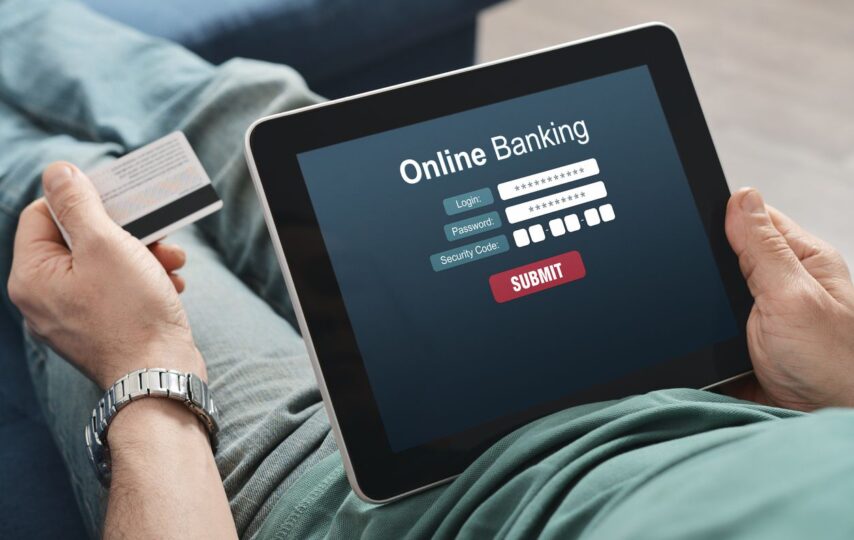Online banking has become an essential part of our daily lives in today’s digital age. From checking account balances to transferring funds and paying bills, online banking offers a convenient way to manage your finances and white out the hassle of constantly calling your bank provider!
However, the process can seem daunting for those new to online banking. This beginner’s guide aims to provide an overview of online banking, including what it is, the different types of accounts available, and the pros and cons of online banking.
Basics of Online Banking
How Does it Work?
Online banking relies on a secure website or mobile app that allows you to access your accounts and manage your finances. For protection, these apps are generally password protected or rely on face or touch identification.
You’ll need to create an online account and provide personal and financial information, including your name, address, social security number, and bank account number. It would help if you used the same name as mentioned in all your security documents to get verified.
Once you’ve set up your account, you can log in and view your account balances and transaction history and make transfers and payments.
Is it Secure?
Security is a priority with online banking because they utilize many privacy measures. It includes two-factor authentication, encryption, firewalls, and anti-virus software.
Similarly, there are some tips and tricks that you should use on your own. Such as, never signing onto your bank’s app on public Wi-Fi. Even with scam calls you need to be careful. Generally, your bank should tell you they would never call you asking for your details to avoid being scammed.
What Are Some Features?
Online banks provide many features just beyond your finance management. It includes top-up features where you can pay smaller or bigger bills. There are applications to budget your finances as well, like tracking spending, requesting payments, etc.
Furthermore, you will read about the many different accounts also present for online banking.
Types of Accounts Available
Chequing Accounts
Chequing accounts are your main accounts designed for frequent transactions, such as regular deposits, cashouts, and cheque writing. These accounts are often used for daily expenses, such as paying bills and purchasing online or offline. Some key features and benefits of checking accounts include the following:
Overdraft Protection: Have you ever suffered penalties when you couldn’t deposit enough funds in your account? Many banks offer overdraft protection, which allows you to avoid fees and penalties for insufficient funds in your account, and you can achieve this through a no fee chequing account.
Debit Card: Checking accounts come with a debit card, which you can use to make purchases and withdraw cash from ATMs. There are no charges or added costs to these transactions because they are all your income or funds that you have put into the account.
Low Minimum Balance Requirements: Some banks have low or no minimum balance requirements for checking accounts. That is great for low to middle-income owners who want to open accounts to allow savings but don’t have a huge deposit.
Savings Accounts
Savings accounts are designed for depositing money to earn interest. With a greater interest rate, you can earn from your savings! But due to their nature, they may have withdrawal restrictions or fees not present in a chequing account.
Credit Card Accounts
Credit card accounts allow you to borrow money to make purchases or pay bills and then pay it back with interest over time. The motivation to use credit cards is the ability to use now and pay later, as well as the rewards and points system many companies provide.
Convenience: Credit card accounts allow you to make purchases without carrying cash, and some offer fraud protection and extended warranties.
Interest Charges: Over purchases, you are charged interest payments. That’s mainly how banks make money over credit cards. However, if there is a balance left on your credit card, the interest payments can build up and ruin your credit score.
Perks of Online Banking
Access to Account Information
With online banking, you can easily access your account information, including balances, transaction history, and account activity. While visiting a physical branch, you’d have to wait until a front-line worker could provide that information. This way, you can manage and budget your finances much better.
Flexibility
Online banking allows you to manage multiple accounts in one place, making keeping track of your finances easier. You can also set up automatic payments and transfers, ensuring that bills are paid on time, and savings goals are met.
Lower Fees
Online banking typically has lower fees than traditional banking methods, and Online banking eliminates the need for physical branches and associated overhead costs. This way, online banks are less likely to charge transaction fees and have little to no costs at taking cash from another bank’s ATM.
Conclusion
Despite all its convenience and time-saving properties, it’s important to consider the potential drawbacks, such as security concerns and technical issues for online banks. By thoroughly going through this beginner’s guide, you can decide whether online banking is right for you.



